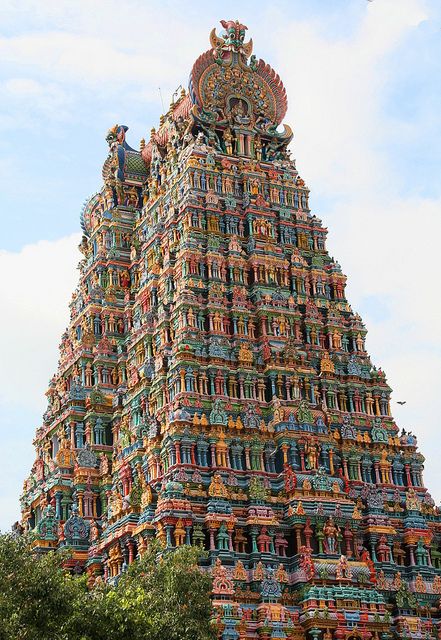
Tamil Nadu is a state located in the south of India which was established on January 26, 1950, and the most famous city of this state is Chennai, which is also the capital of this state. Let’s now know about the districts of Tamilnadu…
There are 32 districts in Tamil Nadu and based on area, the largest district of Tamil Nadu, the largest district of Tamil Nadu is “Coimbatore”, whose area is spread over about 7469 square kilometers. Let us get information about what the names of all the districts of Tamil Nadu are.
Tamil Nadu is the State in Southeastern India each area has a regulatory framework and Deputy Commissioners to control Development and System.
Tamilnadu State comprises 32 Districts, including two recently cut-up regions Ariyalur and Tirupur.
The Following rundown of 32 Districts with Basic subtleties including Taluks (Sub-division of District) you can look at and channel it by clicking the bolt mark on the highest point of the table.
Ariyalur:
Ariyalur, which is a district in the districts of Tamil Nadu, has its headquarters in Ariyalur. The district has 2 divisions, 4 divisions, 4 assembly constituencies, and 1 Lok Sabha constituency. This is one of the districts of Tamilnadu.
The area of the Ariālur district is 1,949.31 km2 (752.63 square miles). According to the 2011 census, the population of Ariyalur is approximately 752,481. The population density is 390 people per square kilometer.
The literacy of Ariyalur is 71.99%, and the female-male ratio is 1016. The district’s population growth rate is 8.19% between 2001 and 2011.
Chennai:
Chennai (formerly Madras) is the capital of the Indian state of Tamil Nadu. Located on the Coromandel Coast of the Bay of Bengal, it is one of the largest cultural, economic, and educational centers of South India. 2011 India census, it is the fourth largest city and the fourth most populous urban infrastructure in India.
The city with the nearby areas of Chennai is the 36th largest urban area, according to the metropolitan area, the population of the world. Chennai is one of the most well-known Indian cities by foreign tourists this year is 43rd in 2015 the world was the most visited. This is one of the districts of Tamilnadu.
Coimbatore:
Coimbatore, which is a district in the districts of Tamil Nadu, has its headquarters in Coimbatore. The district has 2 divisions, 10 divisions, and 10 assembly constituencies, and 3 Lok Sabha constituencies. This is one of the districts of Tamilnadu.
Coimbatore district has an area of 4,723 km2 (1,824 sq mi) and according to the census of 2011, the population of Coimbatore is approximately 3,472,578. The population density is 572 people per square kilometer.
Coimbatore has 83.99% literacy, the female-male ratio is 1000. The district’s population growth rate is 8.19% between 2001 and 2011.
Cuddalore:
Cuddalore, which has a district in Tamil Nadu districts, is headquartered in Cuddalore. There are 3 divisions in the district, 9 divisions, 9 assembly constituencies, and 2 Lok Sabha constituencies. This is one of the districts of Tamilnadu.
The area of Cuddalore district is 702 / km2 (1,820 / sq mi). According to the census of 2011, Cuddalore has a population of about 2,605,914 and population density is 702 people per square kilometer.
Cuddalore literacy is 69.66%, the female-male ratio is 984. The district’s population growth rate is 8.19% between 2001 and 2011.
Dharmapuri:
Dharmapuri, which is a district in the districts of Tamil Nadu, is headquartered in Dharmapuri.
There are 2 divisions in the district, 7 divisions, 5 assembly constituencies, and 1 Lok Sabha area. This is one of the districts of Tamilnadu.
The area of Dharmapuri district is 4,497.77 km2 (1,736.60 square miles). According to the 2011 census, the population of Dharmapuri is approximately 1,506,843 and the population density is 340 people per square kilometer.
The literacy of Dharmapuri is 91.20%. The female-male ratio is 946, The district’s population growth rate is 8.19% between 2001 and 2011.
Dindigul:
Dindigul, which is a district in the districts of Tamil Nadu, is headquartered in Dindigul. There are 3 divisions in the district, 9 divisions, and some assembly constituencies, and some are the Lok Sabha constituencies. This is one of the districts of Tamilnadu.
The area of Dindigul district is 6266.64 km2 (2,506.60 square miles). According to the census of 2011, the population of Dindigul is approximately 2,159,775. The population density is 340 people per square kilometer.
Dindigul literacy is 68.61%, the female-male ratio is 998. The district’s population growth rate is 8.19% between 2001 and 2011.
Erode:
Erode, which is a district in the districts of Tamil Nadu, has its headquarters in Erode.
The district has 2 divisions, 10 divisions, 7 assembly constituencies, and 3 Lok Sabha constituencies. This is one of the districts of Tamilnadu.
The area of Erode district is 5,722 km2 (2,209 square miles). According to the census of 2011, the population of erode is approximately 2,251,744. The population density is 397 people per square kilometer.
The literacy rate of erode is 72.96%, the female-male ratio is 993. The district’s population growth rate has been 12.19% between 2001 and 2011.
Kancheepuram:
Kanchipuram, which is a district in the districts of Tamil Nadu, is headquartered in Kanchipuram. There are 4 divisions in the district, 12 divisions, 11 assembly constituencies, and 2 Lok Sabha constituencies. This is one of the districts of Tamilnadu.
The area of Kanchipuram district is 4,393 km2 (1,696 sq mi). According to the 2011 census, the population of Kanchipuram is approximately 3,998,252. The population density is 910 people per square kilometer.
The literacy rate of Kanchipuram is 75.34%. The female-male ratio is 986. The district’s population growth rate has been 12.19% between 2001 and 2011.
Recommended Articles:-
- Most Developed And Prosperous Cities In Maharashtra
- Famous And Most Beautiful Cities In Kerala
- Waterfalls In Tamilnadu: The Main Attractions For Tourists
- Artificial Lake In India | List Of Artificial Lake In India
- Most Beautiful And Famous Cities In Rajasthan
- Which Are The Most Important Rivers Of Karnataka?
- Which is The Biggest Stadium In India?
- # Top Cities In Tamilnadu To Visit In Holiday
Kanyakumari:
Kanyakumari, which has a district in the districts of Tamil Nadu, is headquartered in Kanyakumari. There are 4 divisions in the district, 9 divisions, some assembly constituencies, and some Lok Sabha constituencies. This is one of the districts of Tamilnadu.
The area of Kanyakumari district is 1,684 km2 (650 square miles) and according to the census of 2011, the population of Kanyakumari is approximately 1,870,374. The population density is 1110 people per sq km,
Kanyakumari’s literacy is 97.34%. The female-male ratio is 1014 here. The district’s population growth rate has been 12.19% between 2001 and 2011.
Karur:
Karur, which is a district in the districts of Tamil Nadu, has its headquarters in Karur. The district has 2 divisions, 6 divisions, 4 assembly constituencies, and 1 Lok Sabha area. This is one of the districts of Tamilnadu.
The area of Karur district is 2,856 km2 (1,103 square miles) according to the census of 2011. The population of Karur is approximately 1,076,588 and the population density is 373 people per square kilometer.
Karur has a literacy of 81.74%, the female-male ratio is 1015. The population growth of the district has been 11.19% between 2001 and 2011.
Krishnagiri:
Krishnagiri is the 30th district of Tamil Nadu, which is known in India as the land of the Black Hills.
There is a large amount of black granite. The total area of this place is 5143 sq. Km. Krishnagiri is quite popular as a tourist destination.
The most prominent tourist attraction here is the KRP dam. Apart from this, Krishnagiri has many archaeological sites, temples, parks, forts and natural sites.
Madurai:
Madurai is the second largest city in the South Indian state of Tamil Nadu. This city of temples situated on the banks of the Vaigai River is one of the oldest settled cities.
The Sirumalai hills are situated in the north of the city and the Nagamalai hills are situated in the south. The name Madurai comes from the word “Madhura”, which means sweetness.
It is said that this sweetness originated from Divine Amrit and Lord Shiva had to rain on this city of this nectar.
Nagapattinam:
Nagapattinam is a town located in Nagapattinam district of Tamil Nadu. This city serves as the district headquarters. Nagapattinam, situated on the eastern coast of the Indian peninsula, came out from the Bay of Bengal when it was separated from Thanjavur district. This town is located 270 km from Chennai.
Namakkal:
A city and administrative district, Namakkal is one of the most popular tourist destinations in the southern part of India. Located in Tamil Nadu, Namakkal offers people of different interests in various categories of attractions.
This city is famous for its basic infrastructure and environment. It is famous as a historic city, educational city, Kukut city, and transportation city. In 1997, after being separated from Salem district, it officially became a district. The history of Namakkal is from the 7th century.
Perambalur:
Perambalur, which is a district in the districts of Tamil Nadu, has its headquarters in Perambalur. There is 1 division in the district, 4 divisions, and 2 assembly constituencies, and 1 Lok Sabha area. This is one of the districts of Tamilnadu.
The area of Perambalur district is 1,752 km2 (676 sq mi) according to the census of 2011. The population of Perambalur is approximately 565,223 and the population density is 320 people per square kilometer.
Perambalur has a literacy rate of 66.49%, the female-male ratio is 1003. The district’s population growth rate has been 17.95% between 2001 and 2011.
Pudukottai:
Pudukkottai, which is a district in the districts of Tamil Nadu, has its headquarters at Pudukkottai.
There are 3 divisions in the district, 11 divisions, and 6 assembly constituencies, and the District comes under more than 1 Lok Sabha area. This is one of the districts of Tamilnadu.
The area of Pudukkottai district is 4,663 km2 (1,800 square miles) according to the census of 2011. The population of Pudukkottai is approximately 1,618,345 and the population density is 350 people per square kilometer.
The literacy of Pudukkottai is 80.49%. The female-male ratio is 1015 here. The district’s population growth rate has been 17.95% between 2001 and 2011.
Ramanathapuram:
Ramanathapuram, which is a district in the districts of Tamil Nadu, is headquartered in Ramanathapuram. There is a division in the division of 6 divisions, and some assembly constituencies, and belongs to the Lok Sabha constituency. This is one of the districts of Tamilnadu.
The area of Ramanathapuram district is 4,123 km2 (1,700 square miles) and according to the census of 2011, the population of Ramanathapuram is approximately 1,353,445.
The population density is 330 people per square kilometer, the literacy of Ramanathapuram is 80.49%, and the female-male ratio is 983. The district’s population growth rate has been 17.95% between 2001 and 2011.
Salem:
Salem, which is a district in Tamil Nadu districts, is headquartered in Salem. There are 4 divisions in the district, 11 divisions, and 11 assembly constituencies, and 1 belongs to the Lok Sabha constituency. This is one of the districts of Tamilnadu.
The area of Salem district is 5,245 km2 (1,3532 square miles) and according to the census of 2011, Salem’s population is approximately 3,482,056 and its population density is 663 people per square kilometer.
Salem’s literacy is 65.64%, the female-male ratio is 954. The district’s population growth rate has been 15.44% between 2001 and 2011.
Sivaganga:
Sivaganga which is a district in Tamil Nadu districts, its headquarters is Shivganga. The district has 2 divisions, 7 divisions, and 4 assembly constituencies, and 1 belongs to the Lok Sabha area. This is one of the districts of Tamilnadu.
The area of Sivaganga is 4,189 km2 (1,617 sq mi) and according to the census of 2011, the population of Sivaganga is approximately 1,339,101. The population density is 275 people per square kilometer.
The literacy of Sivaganga is 71.67%, the female-male ratio is 1003 here. The district population growth rate is between 15.90% between 2001 and 2011.
Thanjavur:
Thanjavur, which is a district in the districts of Tamil Nadu, is headquartered in Thanjavur. There are 3 divisions in the district, 9 divisions, and 10 assembly constituencies, and 1 belongs to the Lok Sabha constituency. This is one of the districts of Tamilnadu.
Thanjavur district has an area of 3,397 km2 (8,764 sq mi) and according to the census of 2011, Thanjavur’s population is approximately 2,405,890 and the population density is 691 people per square kilometer.
Thanjavur has a literacy of 74.44%, the female-male ratio is 1035. The district’s population growth rate has been 8.56% between 2001 and 2011.
The Nilgiris:
Nilgiris, which is a district in Tamil Nadu districts, its headquarters is Oghagandalam (Ooty), the district has 3 divisions, 6 divisions, and 3 assembly constituencies, and 1 belongs to Lok Sabha constituency. This is one of the districts of Tamilnadu.
The area of Nilgiris is 2,565 km 2 (990 square miles) and according to the 2011 census, the population of Nilgiri is approximately 735,394. The population density is 288 people per square kilometer.
The literacy of Nilgiri is 77.44%, the female-male ratio is 1042. The population growth of the district is between 2001 and 2011 (-3) .56%.
Theni:
Theni, which is a district in the districts of Tamil Nadu, has its headquarters in Theni, the district has 2 divisions, 5 divisions, and 5 assembly constituencies, and 1 belongs to the Lok Sabha constituency. This is one of the districts of Tamilnadu.
The area of Theni district is 2,889 km2 (1,115 sq mi) and according to the census of 2011, the population of Theni is about 1,245,899, and the population density is 433 people per sq km.
Theni’s literacy is 69.84%, the female-male ratio is 991. The population growth of the district has been 13.89% between 2001 and 2011.
Thiruvallur:
Thiruvallur, which is a district in the districts of Tamil Nadu, is headquartered in Tiruvallur, 4 divisions in the district, 12 divisions, and 8 assembly constituencies, and 1 belongs to the Lok Sabha constituency. This is one of the districts of Tamilnadu.
The area of Thiruvallur district is 3,423 km2 (1,322 square miles) according to the census of 2011. The population of Thiruvallur is approximately 37,28,104. The population density is 1100 people per square kilometer.
The literacy of Tiruvallur is 84.03%. The population growth of the district is 984, which is 35.33% between 2001 and 2011.
Thiruvannamalai:
Thiruvannamalai, which is a district in the districts of Tamil Nadu, is headquartered in Tiruvannamalai, some divisions in the district are 8 mandal or tahsil, 9 assembly constituencies, and 1 belongs to the Lok Sabha constituency. This is one of the districts of Tamilnadu.
The area of Tiruvannamalai district is 6,191 km2 (2,390 square miles) according to the 2011 census. The population of Tiruvannamalai is approximately 41,64,875 and the population density is 654 people per square kilometer.
The literacy of Tiruvannamalai is 74.21%, the female-male ratio is 994. The district’s population growth rate is 12.75% between 2001 and 2011.
Thiruvarur:
Thiruvarur, which is a district in the districts of Tamil Nadu, headquarters of Tiruvarur, district has 2 divisions, 7 divisions, and 4 assembly constituencies, and 1 belongs to Lok Sabha constituency. This is one of the districts of Tamilnadu.
The area of the Tiruvarur district is 2,377 km2 (6,132 square miles) according to the 2011 Census. The population of Thiruvarur is approximately 1,264,277 and the population density is 533 people per square kilometer.
The literacy rate of Thiruvarur is 74.86%, the female-male ratio is 1017. The district’s population growth rate is 8.11% between 2001 and 2011.
Thirunelveli:
Tirunelveli, which is a district in the districts of Tamil Nadu, its headquarters is Tirunelveli, the district has 3 divisions, 11 divisions, and 11 assembly constituencies, and 2 belong to the Lok Sabha constituency.
Tiruppur:
Tirupur, which is a district in the districts of Tamil Nadu. It is headquartered in Tirupur, 3 divisions in the district, 9 divisions, and 8 assembly constituencies, and 5 belong to the Lok Sabha constituency.
The area of Tirupur district is 5,106 km2 (13,173 sq mi) according to the census of 2011. The population of Tirupur is approximately 2,479,052 and the population density is 476 people per square kilometer.
The literacy rate of Tirupur is 71.02%, the female-male ratio is 989. The population growth of the district is 29.11% between 2001 and 2011.
Tiruchirappalli:
Tiruchirappalli is an industrial and educational city in the south Indian state of Tamil Nadu. Tiruchirappalli is also the administrative headquarters of the district of its name.
This city is situated on the banks of river Kaveri. This city is the fourth largest municipality and urban area in Tamil Nadu. There are many opinions about the origin of this place’s name.
Tiruchirapalli is derived from the name of Trishira Puram of Sanskrit, which is composed of Trishira, meaning three heads, and Palli or Puram meaning the city.
It is believed that the three-headed monster named Trishira received the blessing of Lord Shiva near this city and a boon. Telugu scholar CP Browne believes that the name Tiruchirapalli is derived from the name of Chiruta-Palli, which means a small town.
Tuticorin:
Thoothukudi, which has a district in Tamil Nadu districts, is headquartered in Thoothakkudi. In the district, there are 3 divisions, 8 divisions, and 7 assembly constituencies, and 1 belongs to the Lok Sabha constituency.
The area of Thuthukkudi district is 4,745 km2 (1,832 square miles) according to the census of 2011. The population of Thuthukkudi is approximately 1,750,176 and the population density is 369 people per square kilometer.
The literacy rate of Thuthukkudi is 77.12%, the female-male ratio is 1023. The district’s population growth rate has been 11.32% between 2001 and 2011.
Vellore:
Vellore, which is a district in the districts of Tamil Nadu, has its headquarters in Vellore. There are some divisions in the district, 11 mandal or tehsil, 12 assembly constituencies, and 3 belong to the Lok Sabha constituency.
The area of Vellore district is 6,077 km2 (2,346 sq mi) according to the 2011 census.
The population of Vellore is approximately 3,936,331 and the population density is approximately 654 people per square kilometer. The literacy of Vellore is 79.65%, the female-male ratio is 1007.
The population growth of the district has been 13.20% between 2001 and 2011.
Villupuram:
Viluppuram is a municipality in Villupuram District, in the Indian state of Tamil Nadu. It serves as the headquarters of Villupuram District, the second-largest district in the State.
National Highway No. 45, from Chennai to Dindigul via Tiruchirapalli, goes through the town. Villupuram also has a major train station. The town’s main source of income is agriculture.
Villupuram District lies in the northeast of Tamil Nadu, between Chennai and Tiruchirapalli. It is 162 km south of Chennai and 157 km north of Tiruchirapalli.
Virudhunagar:
Virudhunagar, which has a district in the districts of Tamil Nadu, its headquarters is Virudhunagar. The district has 2 divisions, 8 mandal or tehsil, and 6 assembly constituencies, and 1 belongs to the Lok Sabha constituency.
The area of Virudhunagar district is 4,288 km2 (1,656 sq mi) according to the census of 2011. The population of Virudhunagar is approximately 1,942,288.
The population density is around 450 people per square kilometer. Virudhunagar literacy is 72.02%, the female-male ratio is 1007. The population growth of the district has been 10.91% between 2001 and 2011.



